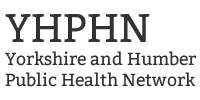
Summary of YH ADsPH reflection sessions, 2017
01 January 2018
Yorkshire and the Humber Association of Directors of Public Health held three evening sessions in early 2017 to reflect on the future role of the DPH in local government. Session 1 was led by Jo Miller, Chief Executive of Doncaster Metropolitan Borough Council and Chair of SOLACE, session 2 by Joe Simpson, Director of the Leadership Centre and Principal Strategic Adviser to the Local Government Association, and session 3 by Rob Whiteman, Chief Executive of CIPFA. These notes summarise the common themes emerging from the discussions.
**********************************************************************************
Local government should be about making people and places thrive, through health, education, participation and self-determination. It has a fundamental role to convene the system, engaging with public service and industry and to be place shaping and place leading.
Theme 1: Navigating the environment of austerity
Whilst the government has abandoned fiscal surplus target by 2020 there are likely to be continued austerity measures for at least the next 10-15 years. How should public health and local government react to this situation? By focusing on what we can do, not fretting about what we can’t. A smaller state requires a smaller and better organised system, where the economy is as healthy as possible, where local firms thrive, provide good jobs and enable local people to be in work leading to a population that costs the state as little as possible. We need to stress the PH aspects of economic regeneration and question the PH impact of those jobs if they aren’t going to people in the borough.
We area also in a time of huge change in the types of jobs we need and the type of industries that are growing. The workforce needed in 30 years’ time will look very different with profound changes to the skills required during a career. Looking forward and horizon scanning is essential to avoid our economies and our people being left behind.
Will the removal of the public health ring fenced grant be viewed as an opportunity or a threat; in times of austerity there is an inherent desire to wring as many overheads out of ring fenced budgets as possible in order to support the rest of the organisation’s financial responsibilities. Without a ring fence funding for public health will be part of the overall council budget, so there will be less of an incentive to seek creative ways to bring monies outside the ring fence. Would business rate retention (BRR), if it happens, allow PH to ‘liberate’ ourselves from the grant and not to confuse the grant and the statutory PH duties of the LA.
Sometimes being the one person not arguing to keep their budget in their purview is a brave but good thing to do; defending your own budget the whole time risks that becomes the lens through which you are viewed. We need to think about how PH funding really can make the difference – it isn’t ‘our’ budget, but is there to support the whole local authority become a public health organisation. Consideration needs to be given to balancing a place budget versus balancing local authority budget – how could funding from the Police and Crime Commmissioner/NHS combine with LA funding to avoid organisational entrenchment and form a full place budget?
Working at scale, especially when advocating on core business, can help. There is huge power in operating collectively rather than as individuals, in the developing a PH strategy for the region. We also need to challenge our ingrained views on what we mean by PH services – so is funding road development from PH monies acceptable if it includes increasing cycle lane provision?
Theme 2: The DPH ‘brand’ and value
How are DsPH marketing ourselves as a group? How should we be?
DsPH can be substantial change agents – we are bilingual, speaking both health and local government, so can help bring the system together. Transfer back into local government has given us a unique place that wouldn’t have been the case had PH remained within the NHS.
As DsPH we can help politicians translate the place agenda and work with anchor organisations, large employers and the wider health economy. We need to address the reputation of DsPH with politicians and misunderstandings that can trivialise our work. What members do best is getting the community to accept changes to services and structures, so appropriate engagement is important.
The agenda for STPs is to get allocative productivity for an area via prevention etc to assuage costs for the acute end is good, but it will take longer than a few years. The NHS is an individual health service, we are a public health service – we need to put the emphasis on PUBLIC – we are the ones who understand collective impact and will be your specialists on that because individual behaviour change approaches will take too long. STPs should be our friend so health economies see they need to put more into prevention than they do. We need to reframe it to be an economic argument rather than a medical one. We should be challenging that everything needs to be done at the larger footprint of STPs – some things still need to be done at a local level. We can promote the specific characteristics of our places and what needs to be done here.
When will we see a DPH becoming a LA chief executive? Public Health should be seen as the route to getting a CEO who really sees the whole picture. Once you get a few former DPH chief executives in post it changes the way SOLACE/CEs see their role and the DPH role.
Theme 3: Reframing the PH narrative
Helping citizens thrive means we have to help them navigate the system, so have to explain in their own language. How well do we then put it into the language for the person on the bus? How well do speak the right language to engage with developers/housing etc?
We are talking about things that people who are unconnected with public institutions don’t understand or connect with – we need a different narrative to gain trust. We are seen as an elite, that we think we know what’s best for people, that we are nannying them, doing things to them, and that needs to change. We need to address and acknowledge their concerns and fears head on. The best advocates to change the community are the community. We should embrace and support community communicators/advocates. If we can help people feel in control of the change they are making and take ownership of that change it is more likely to succeed.
We need to better understand how social movement can harness the power of community. Sometimes the local authority needs to get out of the way and offer help to the enthusiast who want to do something; stop putting up barriers and support bottom-up community development. Most people don’t live their lives by the artificial boundaries we put around things and we need to reach those people in different ways.
How can we use collective power within the system we are in? Much more power for collective advocacy (esp media advocacy) than as individuals.
Good integration means the system is designed to meet the needs of the individual and not the services. Using stories of individuals and their lives work really well to highlight the problems in the system so you can identify what needs to change and how you might be able to change it.
We need to avoid divisiveness and not pit organisations/people/communities against each other. If we reflect the other side’s argument back to them before putting our own argument forward, then we will be listened to with more respect and trust. To do that we need understand their arguments – speak to them about their life and family – and gain their trust and respect.
Differentials in life expectancy has got into public perception, but we are not getting the issue of inequalities in healthy life expectancy across in a way that makes sense to politicians. Quality of life argument not length of life argument is what we need to make and DsPH are the people with the information and skills to make that argument. We need to talk less about statistics and more about people. We want people to be wealthy and happy – we are key to the ‘happiness’ bit.
It is also important to liberate the workforce to do things differently , find the talent in our organisations and invest in leadership to become change agents. PH will also change as data analytics continue to get better and better and provide increased understanding of need, but this will lead to a need for very different skillset in the future. Communicating public health in a post-truth world will see soft skills as important as the ‘expert’ knowledge. Social media considered more trustworthy than newspapers in some communities – we need to rebuild trust. Our role as trusted advisors in the population will be pivotal.
What will the PH professional of the future look like? They will need creativity and to be the sense-maker on how things join up – focusing on the ‘art’ of PH rather than the science. The current PH skills will still be needed but we’ll also need to add more into the mix and bring new people with different skills into the PH fold: generic, bright, multi-skilled, analytical people who understand the context.
